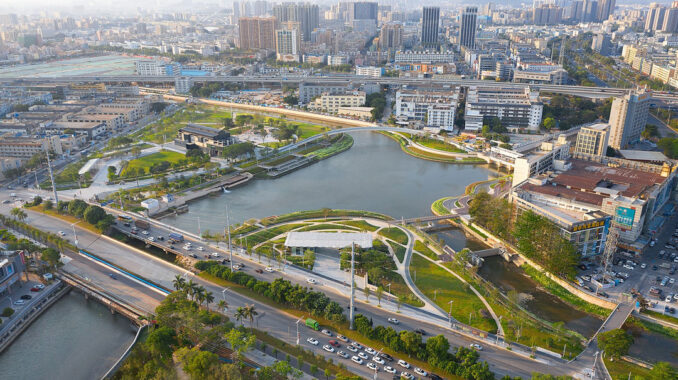
Haoxiang Lake Park, located in Shajing Street, Bao’an District, Shenzhen, covers 13 hectares in area and connects four urban rivers: Pailao River, Xinqiao River, Wanfeng River, and Tantou River. It plays a crucial role in local flood control and pollution interception. Due to deteriorating water quality and lakeside industrial building expansion, the area gradually became an urban brownfield. Haoxiang Lake has undergone ecological restoration in collaboration with the surrounding watershed, significantly improving regional overall water quality. Leveraging urban renewal, the lakeside area has been transformed into an open waterfront park, regenerating the riverbank with flexible measures, reshaping the site’s ecological environment, addressing the growing demand for open spaces for community residents, and tackling social issues arising from rapid urban development.
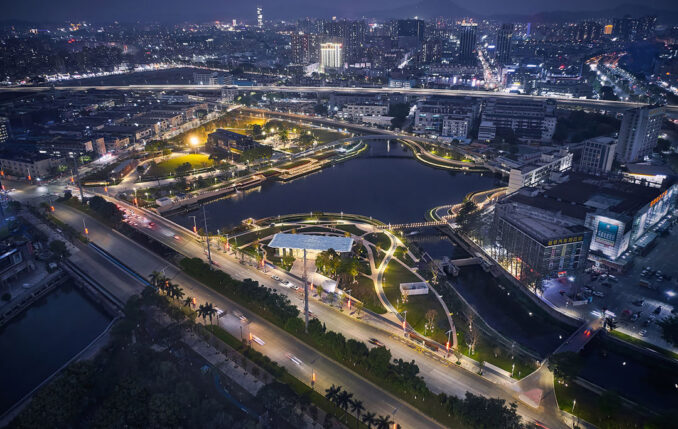
Design Strategies
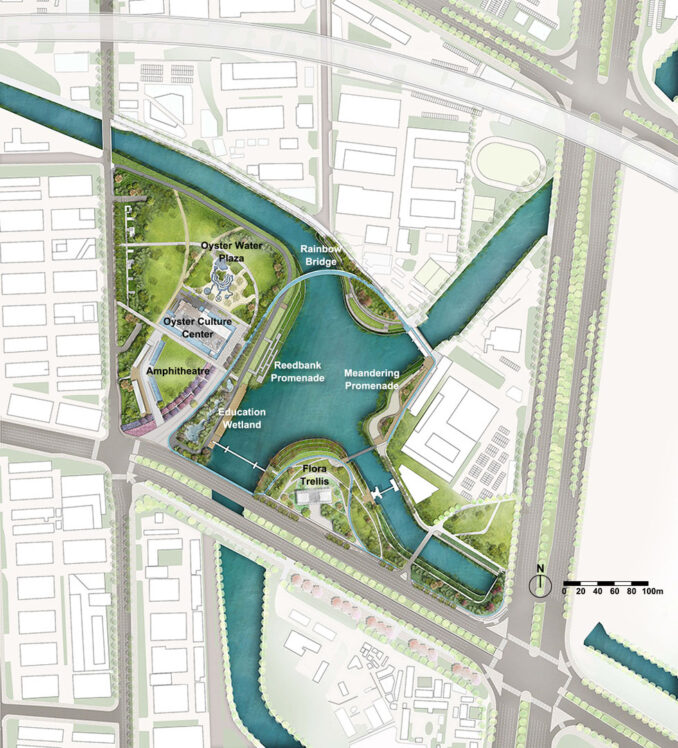
The overall project plan focuses on four aspects: driving industry, improving transportation, reconstructing water networks, and inheriting culture, aiming to create a model for “Shajing Intelligent Manufacturing Life” to help regional industrial upgrading. The plan is reflected in four areas: Connecting public transportation, improving the slow traffic system, reshaping the aquatic ecology, establishing the organic sponge system, regenerating resilient waterfronts, integrating diverse waterfront experiences, inheriting the ancient charm of Oyster Village, and creating Shajing cultural theme spaces.
Reconnect The Waterfront
An 850-meter-long pedestrian loop reconnects the four riverbank spaces, with different landscape nodes like the Flora Trellis Café and Rainbow Bridge emerging in various areas.
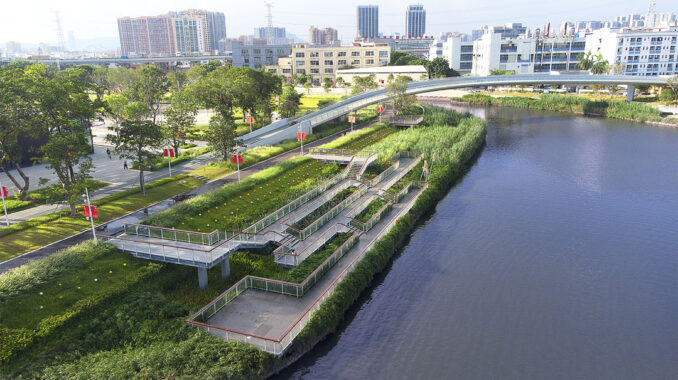
The Rainbow Bridge uses a 238-meter-long arched steel box girder structure, with a maximum span of 77 meters. To minimize the impact on the river and the environment, a bridge across the river is created, becoming the best viewing point for the park and surrounding cities.
Reshape Ecology
According to the site characteristics, a comprehensive layout of water interception, storage, and purification sponge facilities is combined with the park’s landscape to create a complete sponge system that balances flood control, water quality assurance, and biodiversity.
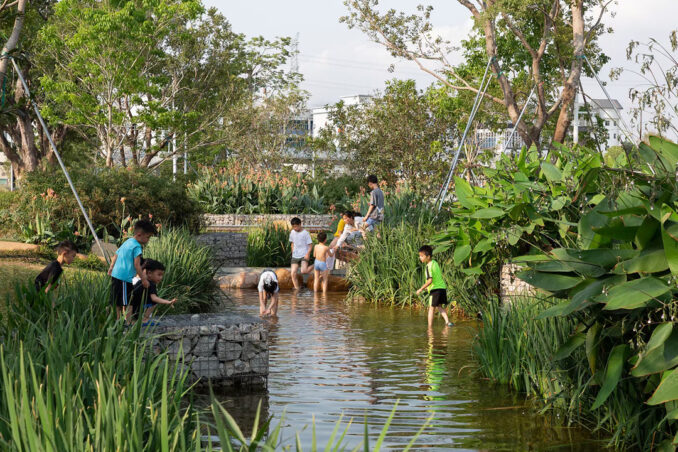
Flood control and storage: This design strengthens the rainwater storage function of the site, with 32% of the green space designed as sunken green space. It utilizes permeable paving and grass ditches to slow down rainwater, reducing erosion while also reducing peak flood values.
Water quality assurance: Rainwater gardens and wetland gardens are designed to receive surface runoff after preliminary purification by grass ditches. Meanwhile, water from the storage pond can be pumped into the wetland garden, achieving interception of non-point source pollution and improving the water quality for landscape use through the purification process of “sedimentation pond—subsurface wetland—surface wetland—landscape water body.”
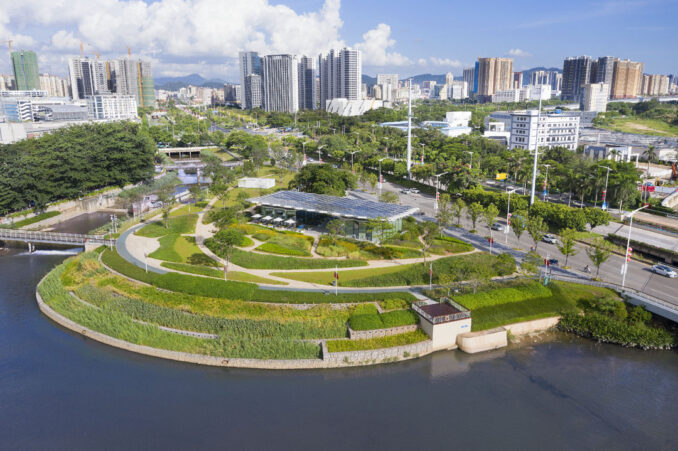
Biodiversity: According to the inundation conditions of the planting area, it is divided into storage, buffer, and edge zones. With full consideration of plant characteristics, diversified wetland plant communities are configured, and landscape construction is conducted to reshape the biological habitat on the site, providing spaces for foraging, hiding, and nesting for small animals, thus enriching biodiversity.
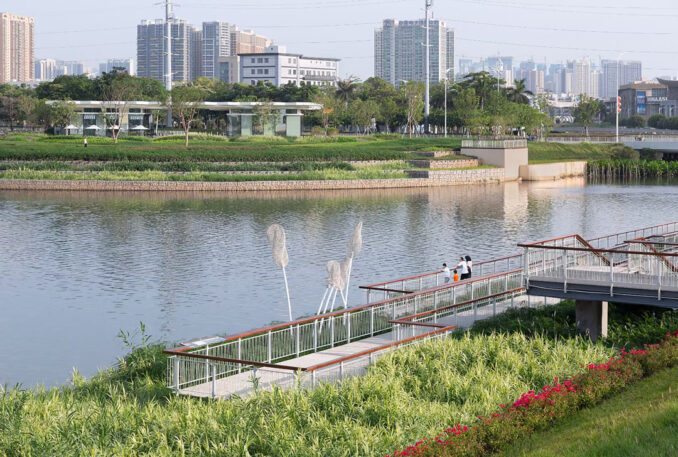
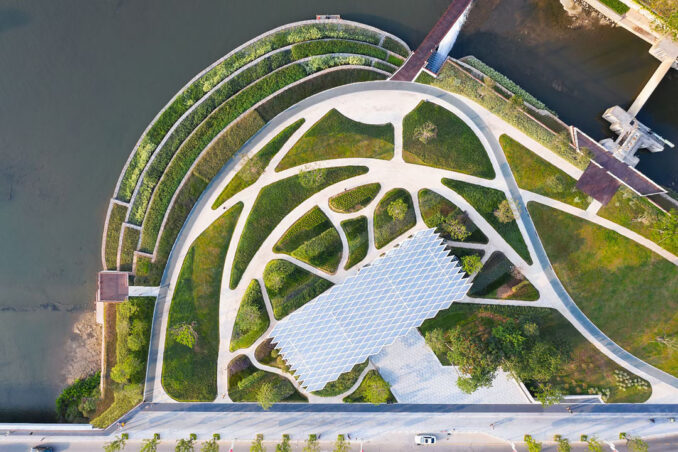
Resilience Regeneration
In addition to low-impact environmental facilities like artificial wetlands and retention lawns, a more resilient waterfront can attract citizens to experience and understand nature and learn about protecting the water environment. After meticulous flood evaluation and analysis, the original 600-meter-long hard revetment was transformed into a terraced wetland-style ecological revetment with a “level-1 vertical subsurface flow wetland—level-2 horizontal subsurface flow wetland—level-3 horizontal subsurface flow wetland—surface lake” structure, connecting to the estuary gentle slope wetland. This alleviates water flow erosion and purifies water, provides multi-dimensional water-friendly possibilities, and attracts citizens to experience and understand nature.
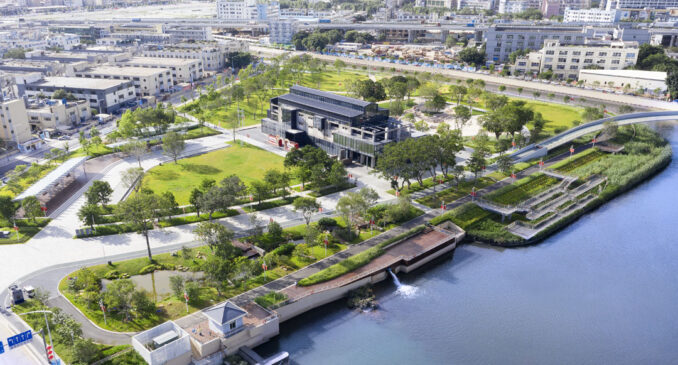
Cultural Renewal
The design explores the “oyster” element, one of the symbols of Shajing folk culture, and incorporates the local traditional oyster shell wall-building technique into the project, inheriting the local context and continuing the site’s memory.
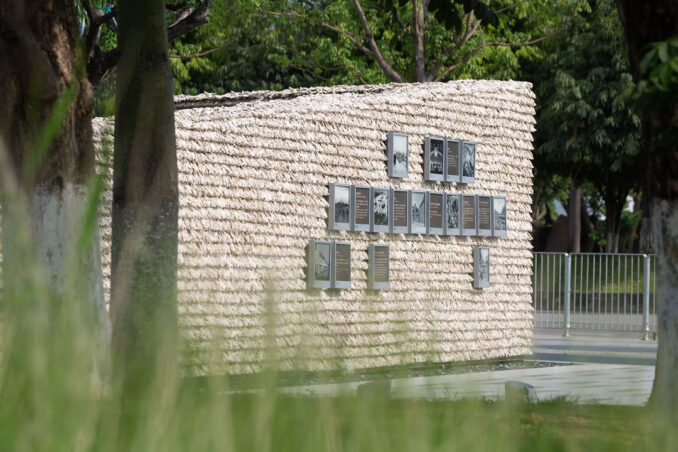
Meanwhile, the team preserved the original Shajing Power Plant building and transformed it into a cultural and creative exhibition hall, reaffirming the cultural attributes of urban heritage. Various activity spaces were designed around it, including the Oyster Shell Water Maze and educational wetlands for students and families, as well as a large lawn for cultural teams and open-air performances, boosting the development and upgrading of new urban industries.
SOCIAL IMPACT
By applying sponge city technology, the project has enhanced the water storage capacity and significantly reduced urban water pollution caused by surface runoff, with an annual runoff control rate of 84.58% and a pollutant reduction rate (calculated by TSS) of 67.66%. It has set an example for the integration of landscape design and aquatic ecological restoration measures.
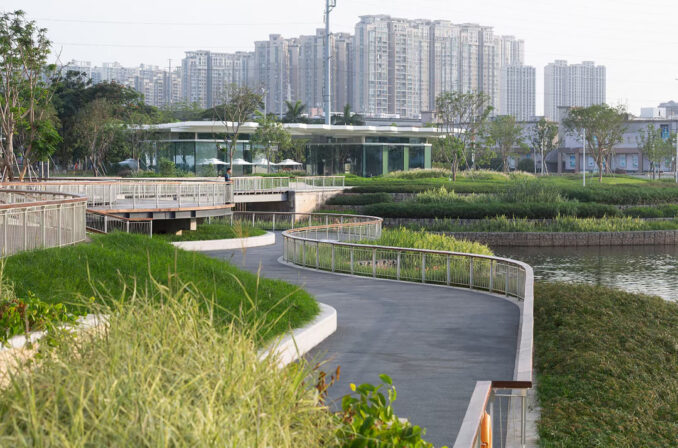
The wetland garden purifies water quality and significantly increases biodiversity, forming a healthy and sustainable ecosystem with 30% of the green space featuring bio-retention facilities. Various habitat types such as water surfaces, ecological shallows, and wetland forests have been created. These provide small habitats for birds, fish, and benthic animal communities.
Haoxiang Lake Park improves urban environmental quality and meets the recreational needs of surrounding residents, effectively driving the development of local industries and economy. After the park’s delivery, it serves as the venue for the annual Haoxiang Culture Festival, becoming a platform for showcasing and communicating local culture.
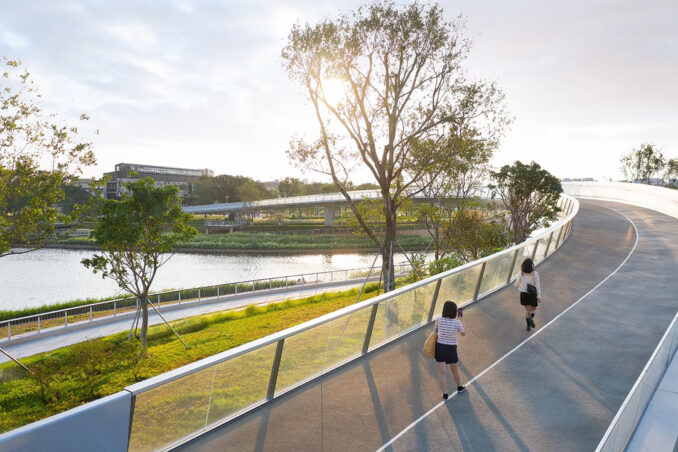
The regenerated Haoxiang Lake Park closely connects the city with people’s work and life, harmonizing urban development and ecological protection. High-standard flood channels, ecological corridors, leisure trails, cultural routes, and industrial chains link the city’s past and future, creating a new city’s ecological signature with clear water and blue sky.
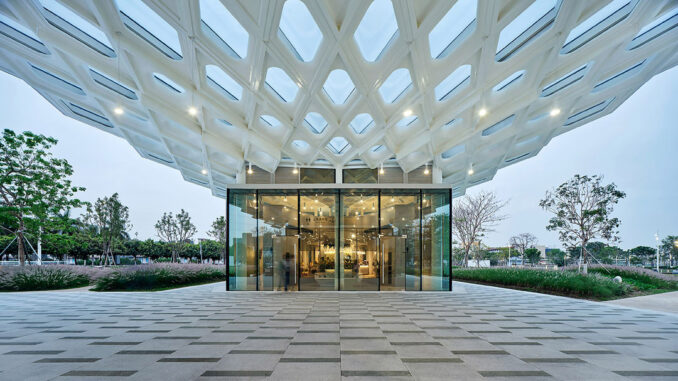
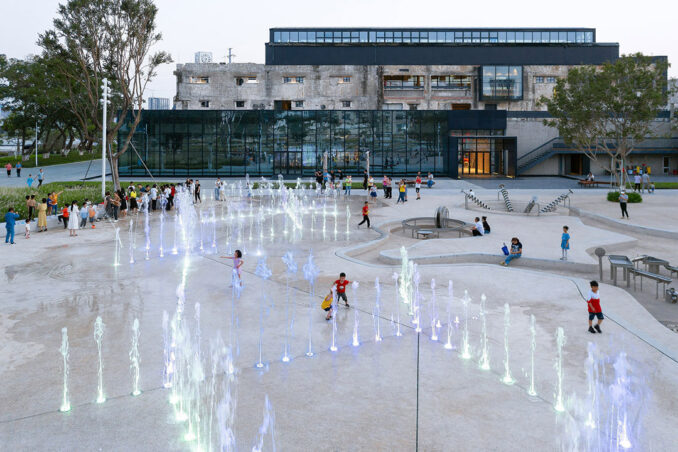
Shenzhen Haoxiang Lake Park: Developing Resilient and Regenerated Waterfronts
Location: Shenzhen, Guangdong, China
Designer Name: ZEHO ECO, eLandscript Limited
Photo Credits: Courtesy of ZEHO ECO
